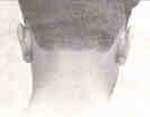Demystifying migraine
 RESEARCHERS in Germany recently provided some vital clues about migraine and its origin by watching it in action. Carnelius Weiller and his colleagues at the University of Essen suggest that the real source of a migraine attack lies in the brain stem though the pain is experienced at the temples (New Scientist, Vol 147, No 1985). Using positron emission tomography (PET) brain scans, the scientists examined volunteers who had migraines on the right side of their heads. Their cerebral blood flow was measured. Seven sites in the brain were lit up during the scans, indicating the areas receiving the highest blood flow and thus being the most active sites.
RESEARCHERS in Germany recently provided some vital clues about migraine and its origin by watching it in action. Carnelius Weiller and his colleagues at the University of Essen suggest that the real source of a migraine attack lies in the brain stem though the pain is experienced at the temples (New Scientist, Vol 147, No 1985). Using positron emission tomography (PET) brain scans, the scientists examined volunteers who had migraines on the right side of their heads. Their cerebral blood flow was measured. Seven sites in the brain were lit up during the scans, indicating the areas receiving the highest blood flow and thus being the most active sites.
The procedure adopted involved scanning patients within 6 hours of the onset of a migraine attack. Thereafter, a pain relieving drug, sumatriptan, was administered and once the pain had vanished another PET scan was conducted. These scans were then compared with scans recorded when the volunteers had no headache.
Of all the 7 sites that the migraine scan lit up, the only site that remained active after the dose of surnatriptan had relieved pain and other symptoms, was in the brain stem - the junction between the brain and the spinal cord. Researchers are of the view that any abnormal activity in this stem may trigger migraine. "It could also explain the repeat attacks that can occur once the effects of sumatriptan wear off," says Weiller.
Further, researchers discovered that the largest increase in blood flow took place between 2 small areas in the brain stem that are meant to control the constriction and dilation of blood vessels in the brain.
Moreover, blood flow in the brain stem was found to be 'More on the opposite side of the site where the pain was being felt. In other words, the patients having right side headaches had the left side of their brain stem active.
Researchers plan to study subjects with left-side headaches now to see whether they will have heightened activity in the right side of the brain stem.
Unexpectedly scientists discovered that migraine was accompanied by heightened activity in centres for bearing and vision; in addition the brain centre associated with mood was also a hotspot. Says Weiller, "Migraine sufferers are typically very sensitive to noise and light."
